History and review of Soviet cameras
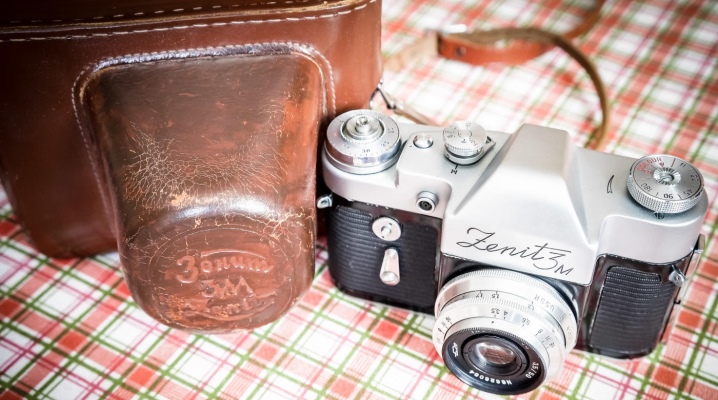
The opinion that the USSR did not know how to do anything right is a big mistake. In the Soviet Union, many high-quality products were produced, which were often exported. Among the common products are cameras. All kinds of models for photographing were the envy of foreign citizens. For example, sailors who went abroad and carried photographic equipment with them, told cases when interested foreigners approached them on the shore abroad and offered to sell unique copies for foreign currency.
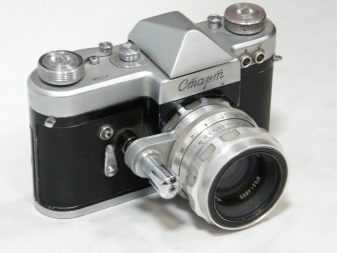
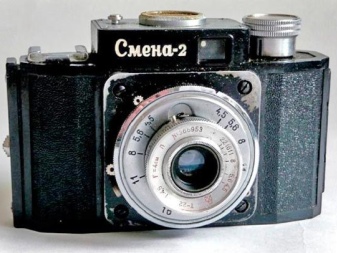
History of appearance
In the new century, photographs have become an integral part of every person's life. They are needed not only to capture joyful or memorable moments - seeing off to the army, weddings, anniversaries, corporate parties. Photographic pictures are required when applying for a job, pasted on a driver's license, in a passport. For the above and other reasons, almost everyone has cameras - professional optical cameras, well-known "soap dishes", as well as devices that are equipped with modern gadgets.
In the USSR, in the post-war years, when the civil war ended, the government came to a consensus on the need to produce sophisticated equipment and cameras in the country as well. However, mass-market prototypes were released many years later.
But the first domestic photograph was nevertheless taken by P.F.Polyakov in 1925 with the help of a hand-assembled camera.
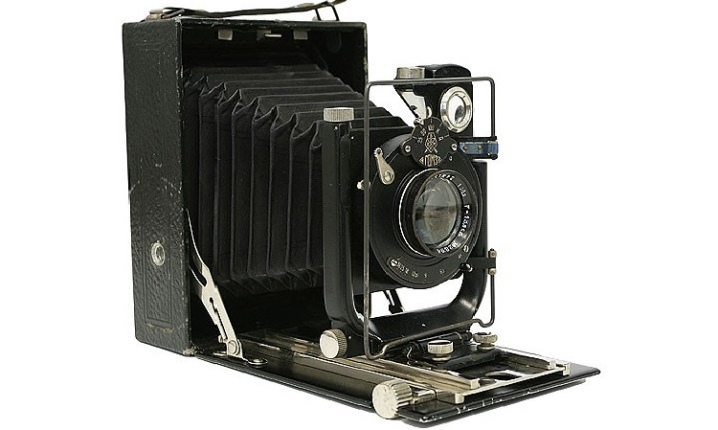
It was only in 1929 that Soviet cameras began to be produced in batches. But the question of what the model should be was widely discussed at the first meeting of the photo-asset held in Moscow. There were calls from the panelists to start producing simple and inexpensive photography devices. The magazine "Soviet Photo" also published the opinions of readers on the topic of a mass camera. The basic requirements sounded similar: to organize the assembly of simple, cheap and folding photographic equipment in large quantities.
Before the start of mass production, the devices were produced by a small Moscow artel. Tsentrsoyuz acted as the customer and financial organizer. Due to the insufficient number of parts and equipment, it was not possible to set up the mass production of photographic equipment, however, the production of such copies in a limited number was nevertheless established. Soon a camera "Fototrud" of its own production (later called "Arfo") appeared in the Soviet Union.
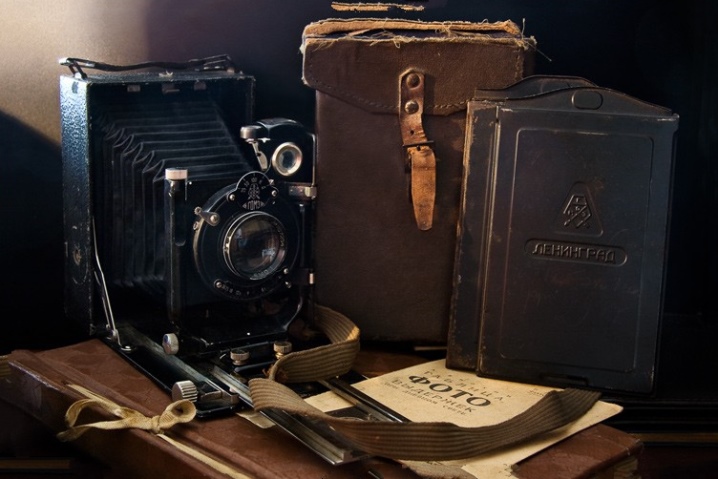
Peculiarities
Cameras began to be mass-produced in 1929, when an electromechanical plant located in Kaluga received a state order, and the enterprise began to produce the first domestic cameras with the laconic name "Photocor 1". Soviet engineers, without further ado, took as a basis the invention of their German colleagues - the Zeiss Ikon apparatus. The new development was equipped with a Tessar lens and a Compour shutter with a shutter speed of 1-1 / 200 and D and B modes. Some models received Vario shutters with a shutter speed of 1/100, 1/50, 1/52, with T and B modes. 15,000 copies were made.
Cameras equipped with domestic shutters received positive reviews. The release was launched in 1932 at the Leningrad plant. The products were produced with shutter speeds of 1/100, 1/50, 1/25 and operated in D and V. modes.New samples were equipped with a flip-down viewfinder without an offset lens frame.
In general, the updated model turned out to be quite successful and was a real breakthrough for its time.


The development of "FT-2" can be called a completely Soviet camera. The device was equipped with a GOMZ shutter, a Periscope lens, where the scaling was 1: 12/150. Photo cameras were made up to the beginning of the Great Patriotic War. Sales amounted to over 1,000,000 pieces.
In 1934, the assembly of new FED cameras began in the Kharkov commune. They were a copy of the German Leica 2 camera, and in the period from 1937 to 1977, 18 different modifications were produced.
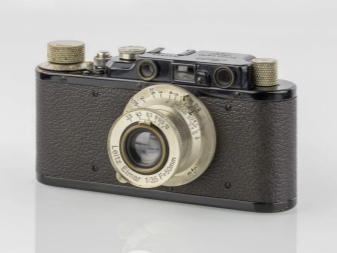
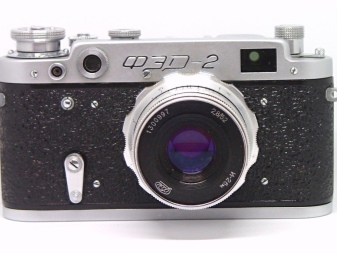
Pre-war period
Until 1941, many cameras were produced. All of them were manufactured at domestic enterprises. The most famous names of devices produced in the 30s are “Pioneer”, “FAG”, “Sport”, “Baby”, “Smena”, as well as “Cyclokamera”, “Yura”. The most popular model can be called the "FED" camera. Pre-war rare models, old cameras can be seen from collectors.
In those years, such cameras were produced in large quantities and were equipped with "Industar" and "FED" and others with different diaphragm sizes.
It is difficult to single out the best camera among the budget models. In the 30s, many similar models were produced, for example, a device in the development of which the famous optician A.O. Gelgar took part. In 1935, the Helveta camera was released. After a short amount of time, it became known as "Sport". Each sample was equipped with a 24x36 lens / frame, a shutter where the mechanical vertical curtains moved, and a shutter speed of 1/500, 1/200.
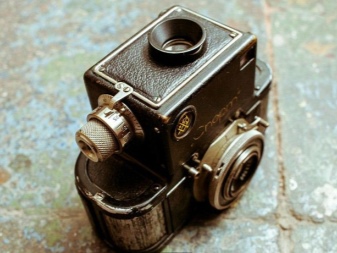

The back cover was removed for the installation of special cassettes, and the mechanics, designed for working with the film, functioned only in one direction. Old models of such a device are very rare, because in total there were about 2000 such cameras produced. Therefore, these days they are among the most expensive collectible cameras.
Along with popular devices designed for the mass consumer, quite successful attempts were made to create a professional camera. High-quality cameras with excellent characteristics were necessary, first of all, for correspondents covering the life of the young state of workers and peasants. Therefore, in September 1937, the first samples of the revolutionary camera "Reporter" were produced at the Leningrad plant.
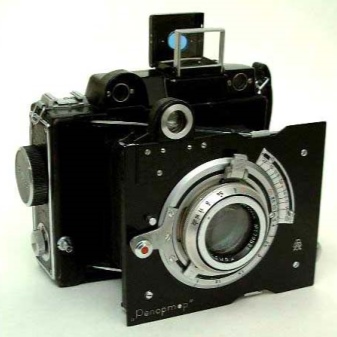
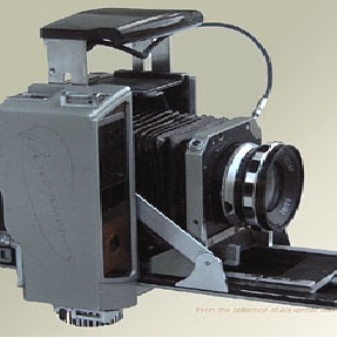
It was possible to take photographs with new cameras only using special photographic plates with a 6.5x9 format or roller, format film produced before 1939. The invention is rightfully considered successful, because after the end of the war, the Mamiya Press camera manufactured in Japan, model 1962, was very similar to the Reporter camera.
However, the first representative of such photographic equipment can be called the "Tourist" model, the release of which began in 1936, that is, one year earlier.

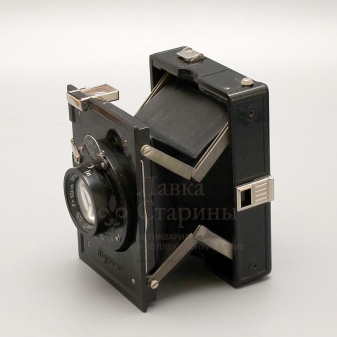
The legendary "Reporter" for those times was a real breakthrough in the field of photography. The model was equipped with an Industar 7 lens, a shutter with curtains and a shutter speed of 1 / 5-1 / 1000 seconds. It functioned in two modes D and V and was equipped with a viewfinder (folding version). To adjust the focus, a distance scale or rangefinder was used. In those years there was no rating for cameras, but if it existed, it was the "Reporter" that would have deservedly won the first place among other modifications.
The review of pre-war cameras can be continued with the names of amateur models that were intended for novice photographers. These are the so-called box devices. Plate models were notable for their low price and were available to virtually every Soviet citizen. The most famous and popular modifications are "Pupil", "Record", "Young Photographer".
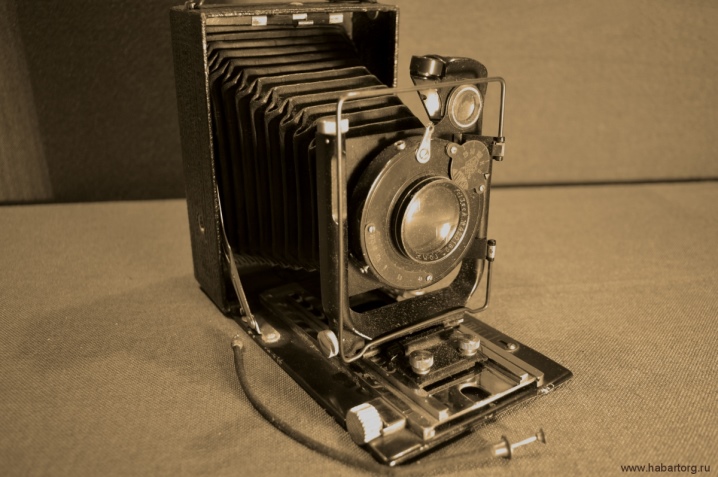
The production of cameras in the 30s differed little from the production of the 80s in terms of creating a workshop for the production of consumer goods on the basis of a defense plant. Following such a conjuncture was imperative, which was a real headache for many directors of enterprises and partly prevented the creation of high-quality photographic equipment with excellent lenses and other characteristics.
Before the Great Patriotic War, the total production of the number of models was over two dozen. The most sold were the FED and Photocor modifications.
During the Second World War, the production of photographic equipment was practically curtailed, and after the victory over the armed forces of Germany, the next stage in the development of the production of domestic cameras began.
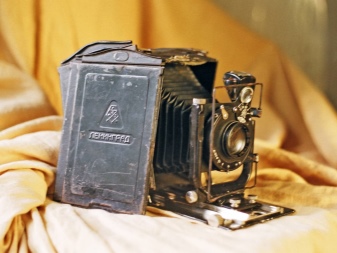
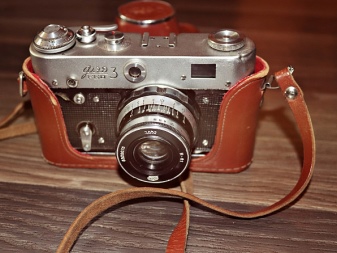
Popular brands and models
Before the war and after its end, a large number of different models of cameras were produced. It makes sense to list old cameras and the names of popular modifications of the 50s, 80s, as well as some technical characteristics. You can start your review with the very first samples.
- The products of the Moscow artel "Photo-Trud" "EFTE" ("ARFO") are the oldest and rarest. Folding version of the plate model. Equipment - central shutter, frame size - 9x12 cm.
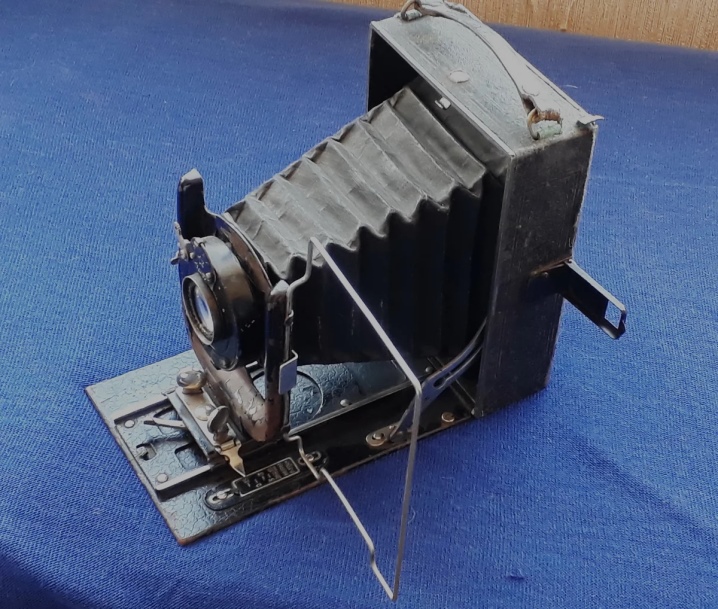
- Legendary "FED". Such rangefinder devices were equipped with mechanical shutters (shutter), interchangeable lens and were a copy of a German camera. Rare models are still kept by collectors.
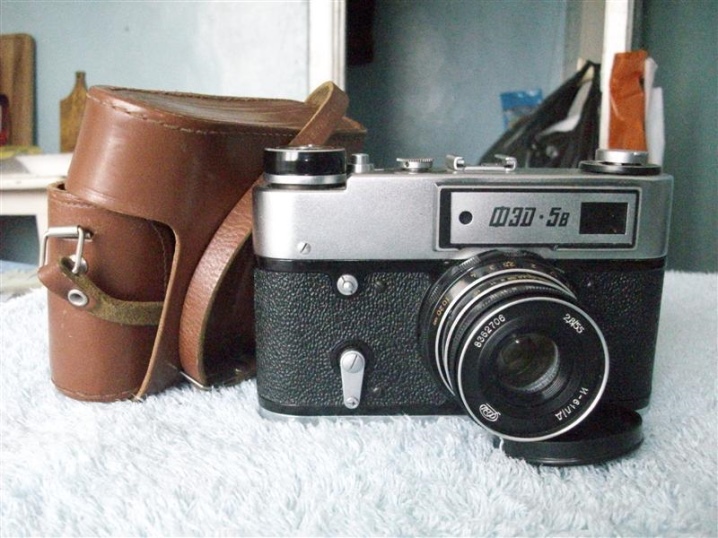
- Smena camera. Produced from 1939 to 1941. Equipped with a central shutter, 35 mm cassetteless charging, frame viewfinder, worked with perforated film.

- Medium format camera "Komsomolets". Produced at a plant in Leningrad (LOMO) in the period 1946 to 1951. There is a central shutter, a mirror viewfinder for framing, sighting, focusing.
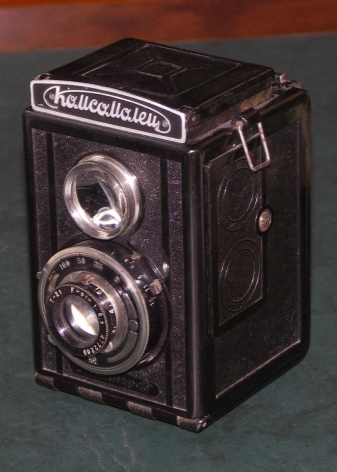
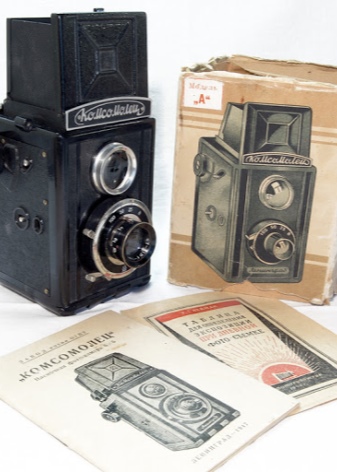
- Among the large-format models, one can single out an instance of "Horizon" with optical viewfinder. He worked with 135 film. The shutter and lens are in a special drum.

- Another folding camera of those times - "Moscow". He worked with 120 film, had a central shutter. In general, the device was structurally reminiscent of the German model produced at the Zeiss Ikon factories.
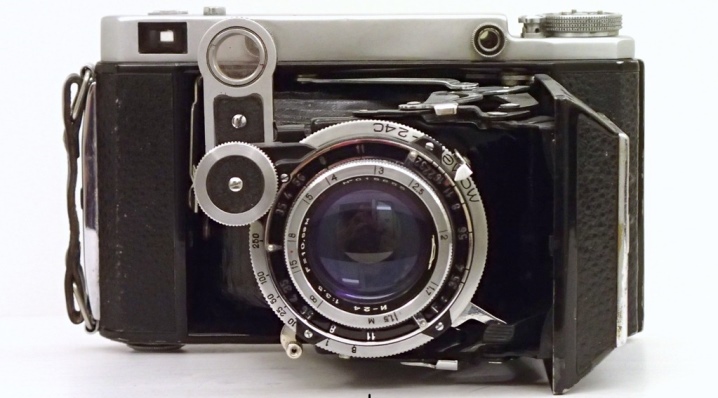
- The best camera, in the opinion of many, is the FED. On the basis of this device, the Zorkiy model was created with a separate rangefinder and viewfinder.
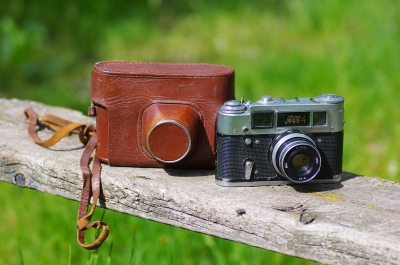
- Camera "Zenith". One of the first legendary examples, produced from 1952 to 1956. The prototype was the model of the first "Sharp". Over 39,000 copies were produced.
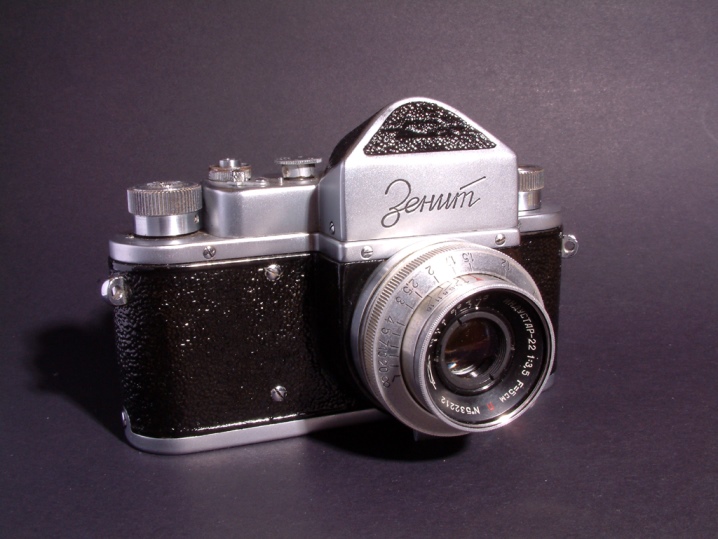
- "Sharp 10". Central shutter camera. One of the main components is a programmable machine with an exposure meter based on a selenium photocell. On the left side was the cocking trigger.
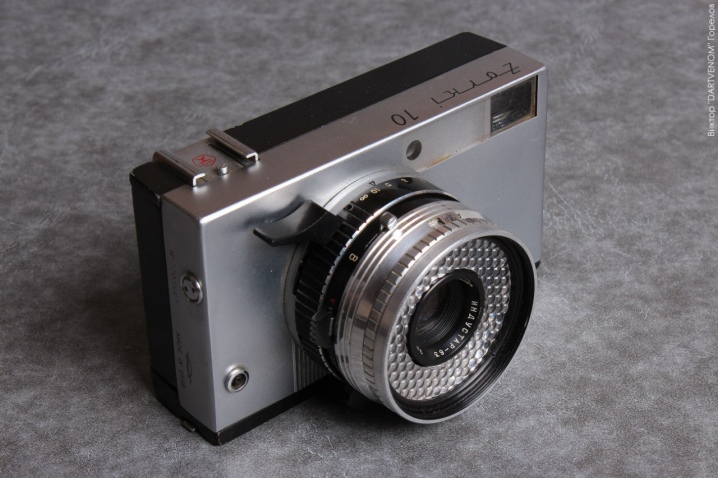
- Legendary "Change 8M". Produced from 1970 to 1992. Simple, reliable design, "Triplet-43" 4/40 lens. In total, over 21,000,000 units were produced.
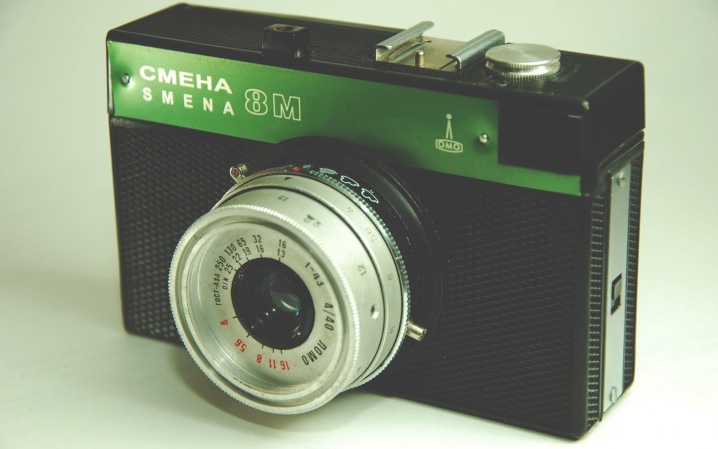
It is difficult to imagine a rating of the most popular pre-war and post-war camera models. In each modification of photographic equipment, it was possible to implement certain developments, and they cost differently. The most expensive pre-war cameras are the Tourist and Reporter cameras.
In the post-war period, when the production of more modern models was mastered, not only technical characteristics, but also the price range were changed.
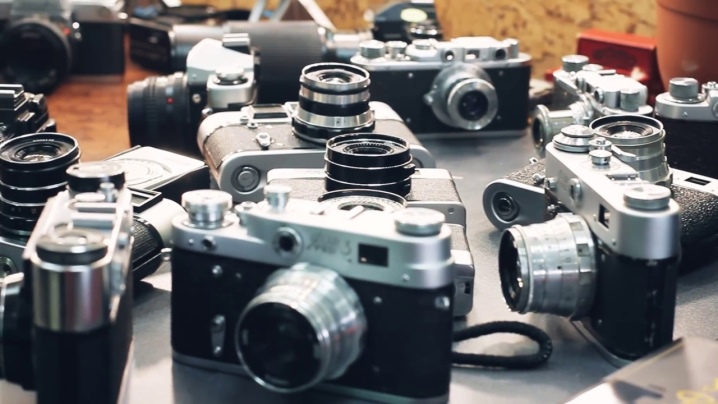
1946-1959 year
A distinctive feature of the production of post-war devices was the structural similarity with the cameras of captured samples and the simultaneous improvement of individual units. Popular models of cameras "Moscow", "Komsomolets" can be cited as illustrative examples.
Three years after the victory over Nazi Germany, the production of Zorky cameras was launched by May 1. By the end of the fourth decade, Kiev cameras were produced in large quantities (production started in 1947). Around the same time, an active export of photographic equipment began abroad. The main advantages of Soviet cameras were low price and good maintenance.
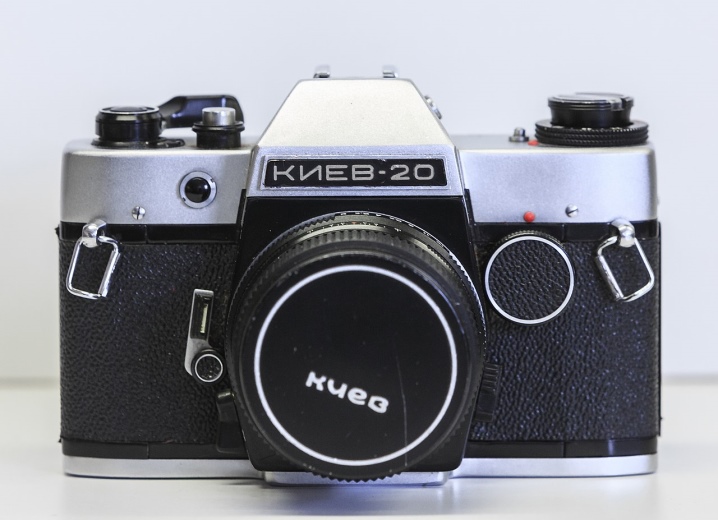
Also an attractive moment for foreign buyers was the fact that the vast majority of optics models were produced at military factories, and the whole world knew about the formidable power of Soviet weapons.
Interesting facts about Soviet cameras in the video below.













The comment was sent successfully.